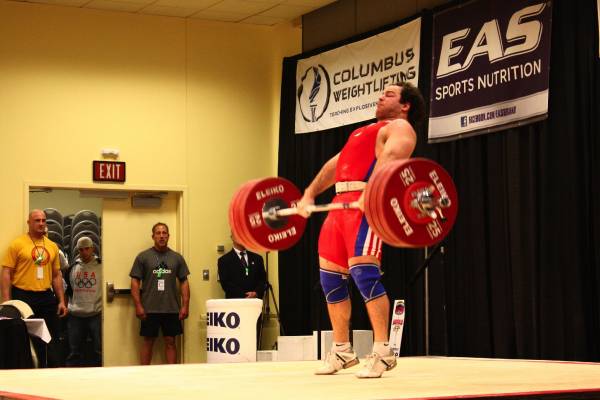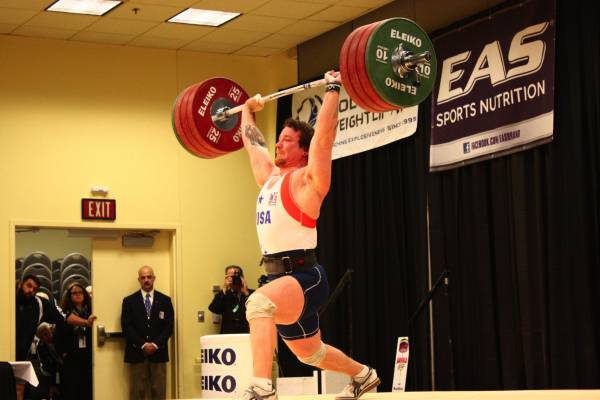You don’t have twenty hours per week to spend in the gym. You don’t have the ability to workout twice a day, six days a week, and once on Sunday. And yet you want fast progress and it’s ticking you off that you ain’t seeing it! You’re smart enough to know the fastest way to get there is to train and live like a professional athlete. But you’re also smart enough to know that just ain’t going to happen.
What’s a serious recreational athlete like you (and like me!) supposed to do to solve this problem?
Well, if you can’t train more often, and you can’t train harder than you already are, then you’re left with only one option: You have to train smarter!
Monkeys in the Trees: Inside the Mind of the Beginner
You can always tell when someone is brand new to the subject of serious exercise by their tendency to focus on the differences between two workout routines, rather than the similarities. These are the guys who get into all the “Internet battles” and who “flame” the comments sections of fitness bloggers. They are classic example of people who “can’t see the forest for the trees”. And this is at the root of their abysmal rate of progress.
You and I both know the principles of all successful workout routines are the same – even though on the surface they can appear to be completely different. But what are they?
The Gods-honest-truth is we don’t know all of them. Science is working on it, but we ain’t there yet. However, we do have a pretty good idea about a few of them.
Among those things you should be focused on are:
- Total weekly volume
- Total weekly load
- Exercise selection
- Priority of exercises in the program itself
I’ll quickly define these for you:
- Volume is your sets times reps. It’s a very simple, yet highly important metric that you can use to either ramp up or ramp down what you’re doing.
- Load is your volume times the weight used. So, if you did 3 sets of 10 with 100 pounds, then your volume is 30 and your load is 3,000 pounds. *In my opinion this number is more important than the volume.*
- Exercise Selection refers to which exercises you choose. Duh! Don’t be fooled here. This is harder than it seems. What you choose depends upon your goals, your training age, your real age, your injury history, even your diet and sleeping patterns. What all, good routines share is a highly specified selection of exercises that fit the exact goals and needs of the lifter in question.
- Priority of Exercises in the program is nearly as important as what exercises you choose in the first place. Prioritization is simply where in the workout you put the exercises. If you have two hours to workout, in which hour do you think you’ll be the freshest?
Disenchanted Forest: Attack of the Pseudo-Intellectual
Unfortunately, once a beginner learns about principles, they often slide into a new type of cluelessness. This is the phase of the pseudo-intellectual: a person who can only see the forest and is completely blind to the trees. They KNOW every good routine is based on the same underlying principles, so they no longer care about details at all.
Why should they? Details don’t matter, right? That’s what we JUST learned above.
Wrong!
Successful routines share two things that are always true:
- They get the majority of the ultimate principles right.
- They get the majority of the proximate details right.
 All of the causes of a particular effect can be split into ultimate causes and proximate causes. The ultimate causes are those that are like we discussed above – the key principles, the bedrock, the foundation. The proximate causes are the tiny details at the end of the chain – closest to the event itself.
All of the causes of a particular effect can be split into ultimate causes and proximate causes. The ultimate causes are those that are like we discussed above – the key principles, the bedrock, the foundation. The proximate causes are the tiny details at the end of the chain – closest to the event itself.
Let’s take an example. Suppose we want to know the proximate and ultimate causes of why a particular UFO crash-landed in the parking lot of my friends Olympic lifting club, Ashville Strength and Conditioning in North Carolina. (This really happened. Really.)
- The proximate cause is that the alien pilot zigged when he should have zagged.
- The ultimate cause is that the pilot was drunk on Romulan Ale and that negatively affected his judgment.
Obviously, we can split these two into subsets of causes and put those sub-causes in a long line (or tree) leading up to the event itself. But the important point is that every event has a long history of causes stacking up on themselves.
If you want to crash land on the earth it isn’t good enough to simply get drunk. You also need to zig at the right time. The details in your workout program are the zigging.
The 4-Hour Bulgarian Workout
Given all of that information about what makes a program actually work, lets write one for you! Your constraints are that you have very little time, an erratic schedule, and are still in the relative beginners stages of Olympic lifting. (By this I mean: your snatch technique sucks. Don’t lie. You know you can do better!) Your goals are to improve as fast as possible given these limitations.
This workout is going to take you just four hours per week, and will be done within the framework of a Bulgarian-inspired methodology – the key to which is the concept of auto-regulation, or learning to listen to your body and act accordingly.
You’ll have only two workouts averaging out to about an hour each. Simple math tells you that you’ll need to repeat them as necessary to get up to the four-hour mark each week.
Heavy Day
- Snatch: 8 sets of 2 reps (8×2) as heavy as you can with perfect form
- Front Squat: 1 rep max (1RM) + 5×3 at a weight that feels heavy, but not brutal
- Romanian Deadlifts: 1×5 with a weight that is very heavy, but not a true “max.” Perfect form is KEY.
Light Day
- Snatch: 10×2 as heavy as you can with good form
- Front Squat: 1RM
Final Notes
 Do this program for one month, eat a cookie, and call me in the morning. It’ll probably be time for me to teach you how to clean. I only put in snatches because learning the snatch in isolation is a better way to learn, in my opinion. Clearly, if you are more advanced, you can sub-in some clean and jerks.
Do this program for one month, eat a cookie, and call me in the morning. It’ll probably be time for me to teach you how to clean. I only put in snatches because learning the snatch in isolation is a better way to learn, in my opinion. Clearly, if you are more advanced, you can sub-in some clean and jerks.
The 1RM on the front squats should be the last weight you can hit with good technique. If you start to “grind” it out or your form goes to hell, you are done.
My suggestion is that you alternate the workouts. Do two of each for four total workouts each week. But you can also cut it back to only two or three workouts per week – still alternating them. Or even go crazy and do six workouts a week. It’s up to you.
Listen to your body. Work hard. Be smart. And never forget it isn’t the details nor the principles that matter, but the combinations of them that result in progress.






